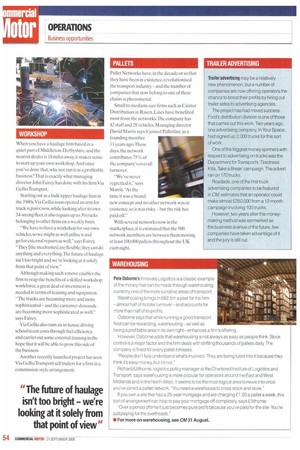WAREHOUSING
Page 54

If you've noticed an error in this article please click here to report it so we can fix it.
Pete Osborne's Innovate Logistics is a classic example of the money that can be made through warehousing, currently one of the more lucrative areas of transport.
Warehousing brings in £62.5m a year for the firm almost half of its total turnover -and accounts for more than half of its profits.
Osborne says that while running a good transport fleet can be rewarding, warehousing -as well as being a profitable area in its own right-enhances a firm's offering.
However, Osborne adds that warehousing is not always as easy as people think. Stock control is a major factor and the f irm deals with shifting thousands of pallets daily. The company is fined for every pallet it misses.
"People don't fully understand what's involved. They are being lured into it because they think it's easy money, but it's not."
Richard Ellithorne, logistics policy manager at the Chartered Institute of Logistics and Transport, says warehousing is more popular for operators around the East and West Midlands and in the North-West. It seems to be the most logical area to move into once you've joined a pallet network. "You need a warehouse to cross stock and store."
If you own a site that has a 25-year mortgage and are charging £1.50 a pallet a week, this sort of arrangement can help to pay your mortgage off completely, says Ellithorne.
Over a period of time it just becomes pure profit because you've paid for the site. You're just paying for the overheads."
• For more on warehousing, see CM 31 August.




























































































































































































